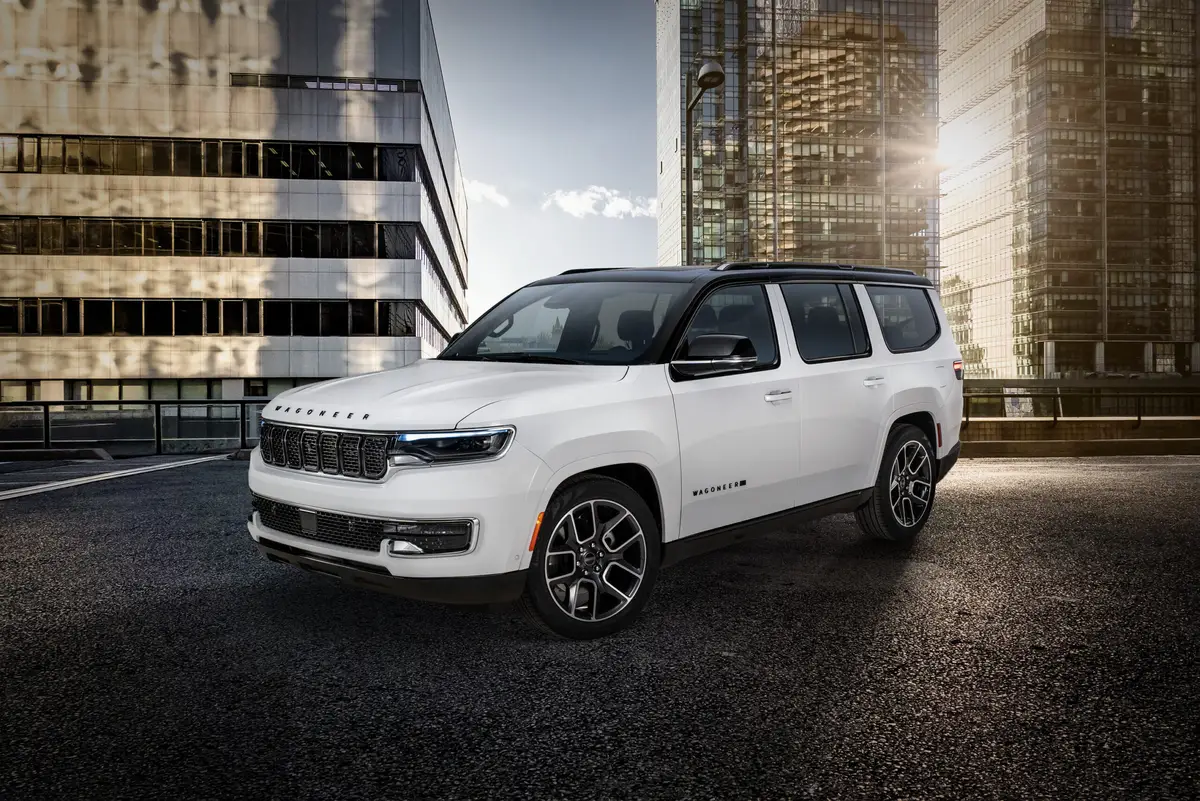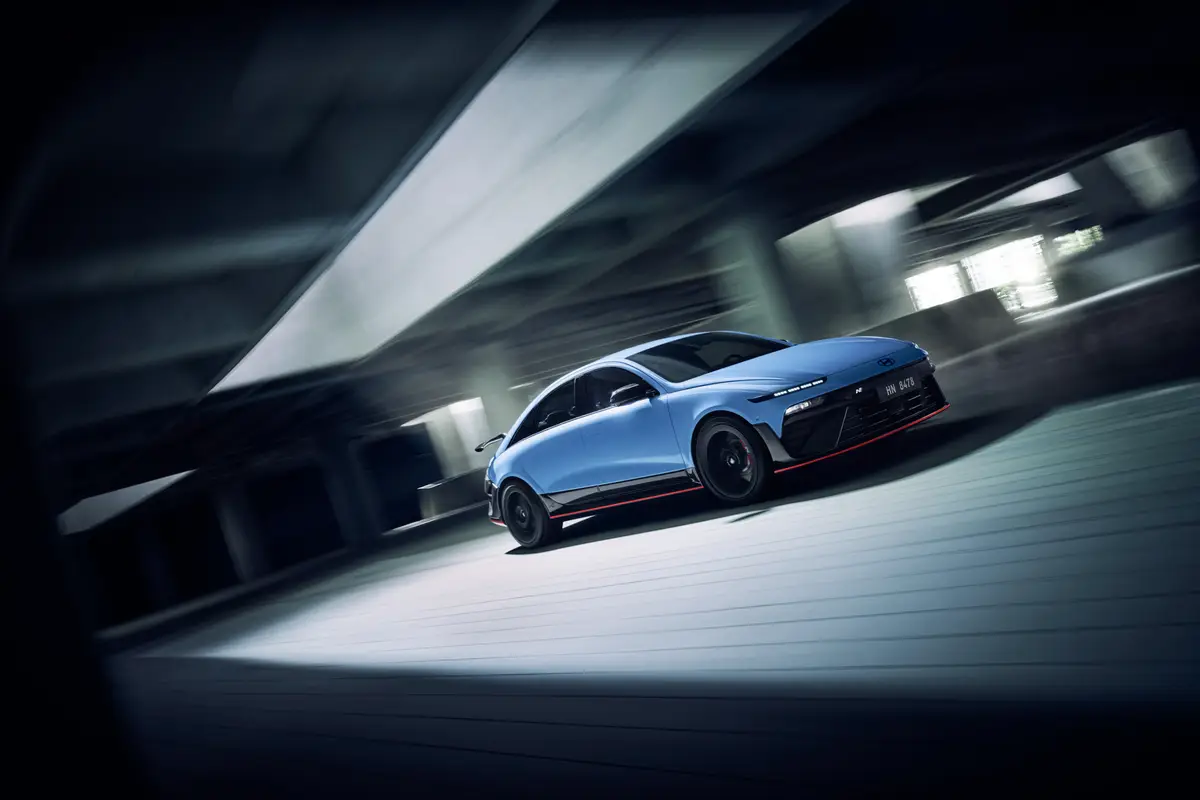chicagotribune.com's view
How can you fault a vehicle that comes with its own folding picnic table, built-in metal tub to hold iced bottles and cans and compartment to store freshly caught fish?
Perhaps you know the vehicle as the Honda CR-V, a sport-utility that does something most SUVs don’t: It gets very good gas mileage.
The reason for the above-average fuel economy is that this is a compact ute powered by a 4-cylinder engine and not a behemoth that will pull the Queen Elizabeth (the ship, not the monarch) across country.
Since it appeared on the market in the 1997 model year, the CR-V has topped Honda’s sales forecast by a considerable sum. Honda guessed that it could sell 60,000 the first year to those wanting a small four-wheeler. It was off by about 7,000 units. Would have sold more, but Honda couldn’t make more.
Demand exceeded supply by so much that Honda added CR-V production at a second plant in Japan for 1998. Sales are now double what the automaker thought it could peddle when the sport-ute, built off a Honda Civic station wagon platform, appeared to rival the Toyota RAV4.
The CR-V is still produced only in Japan, but there’s talk of U.S. production. Only holdup, it seems, is that Honda’s plant in Ohio is building as many Civics as it can to meet demand.
The RAV4, by the way, which was expected to clean CR-V’s clock, accounted for 57,138 units last year. But then, the RAV4 doesn’t have a picnic table, much less a fish-storage compartment.
The CR-V is offered in front-wheel and four-wheel-drive, though only about 20 percent of sales are of the front-wheel variety, first offered in the 1998 model year to provide a slightly lower cost CR-V ($18,650 FWD versus $20,550 4WD for 2000).
The CR-V looks like a sport-ute without acting like one when it comes to ride, handling and fuel economy. We tested the 2000 4WD CR-V EX, which behaved much like a car rather than the typical SUV. The CR-V is a more civil people-and-possession hauler than a truck-based SUV. It will carry four adults (or two adults and three kids) plus some luggage or grocery bags without making you look like you’re at the helm of a locomotive.
The 4WD system is one of those “when-needed” types. You travel in FWD until wheel slippage is detected and then it engages all four wheels without your having to grab a lever or twist a dial.
But this is not a Ford Expedition that welcomes steep slopes or deep sand. It is a vehicle in which the 4WD will assist you over rain-soaked streets and snow-covered pavement. An off-road adventurer it isn’t.
CR-V offers only a 2-liter, 146-horsepower, 16-valve, 4-cylinder engine. The 22 m.p.g. city/25 m.p.g. highway rating is evidence that quick takeoffs are not its forte. Our test vehicle was teamed with the standard 5-speed manual, the transmission of choice for those who spend lots of time maneuvering through snow, not through bumper-to-bumper traffic. Automatic is an $800 option.
The 22/25 rating is the same with 5-speed manual or 4-speed automatic, so opting for manual won’t increase mileage.
The suspension is very carlike and spares you the SUV jostling in the cabin. The CR-V comes with 15-inch, all-season radial tires that do a good job of h olding th e pavement. Some might consider the steering a tad stiff because it requires a little extra pressure when making turns. We’d call it precise and a contributor to rather pleasant handling, especially in a vehicle posing as a sport-ute.
Four-wheel anti-lock brakes are standard on the 4WD EX and the new CR-V 4WD SE that just arrived in showrooms as an uplevel luxury version. ABS isn’t available on other CR-Vs.
In addition to the picnic table (but no picnic chairs), fish carrier (2-liter plastic pop bottle will fit as well) and metal tub (that will hold wet clothes as well as ice and cans or bottles under the table, in the floor, where most vehicles hide the spare tire), noteworthy features include a pull-up/fold-down tray table between the front seats with dual cupholders.
Other nice touches include a spare tire mounted low enough on the rear door so it doesn’t interfere with rear vision; easy-to-flip-and-fold rear seats to provide spacious cargo room; small, covered compartments in the cargo floor adjacent to the metal tub; power plugs front and rear for accessories, such as a TV set when you use that picnic table; and placement of the parking brake handle low between the two front seats where it is out of the way.
The CR-V appears narrow from the outside, but that impression doesn’t hold once you’re inside. It helps that power window controls are on the instrument panel to the left of the steering column rather than on the driver’s armrest. This allows for a slim armrest that doesn’t poke your thigh or leg and make the cabin feel tight.
There are some annoyances, however.
In back, the rear window pops up and the rear door swings open left to right for access to the cargo hold. A swing-up hatch lid would be more convenient. And while rear-seat occupants have ample head and arm room, legroom will be tight if they sit behind a tall driver/passenger. And the rear seat back stands upright, not the most comfortable position for long-distance travel.
Another drawback: no sunroof.
The CR-V EX is priced at $20,550 and comes loaded with standard equipment. There are dual air bags, remote keyless entry, air conditioning with micron filter, AM/FM stereo with CD player, tilt steering, cruise control, power windows and door locks, intermittent wipers, body-colored power mirrors, tinted glass and rear window wiper/washer.
The new SE starts at $22,600 with 4-speed automatic, leather seats, cassette and CD player, privacy glass on the rear sides and back, body-colored bumpers and bodyside moldings and hard spare-tire cover as standard.
Honda is watching the RAV4 closely because it gets a redesign for 2001; CR-V doesn’t. The 2001 RAV4 will be at the New York Auto Show in April. Honda also is watching for the new Ford Escape sport-ute coming this fall, which is about the size of the CR-V and sure to be the beneficiary of a Ford advertising blitz.
2000 Honda CR-V EX 4WD
Wheelbase: 103.2 inches
Length: 177.6 inches
Engine: 2-liter, 146-h.p., 16-valve 4-cylinder
Transmission: 5-speed manual
Fuel economy: 22 m.p.g. city/25 m.p.g. highway
Pluses: The look of a sport-utility. The room of a sport-utility. The full-time four-wheel-drive of a sport-utility. The mileage as well as ride and handling of a Civic wagon. A handy pull-up/drop-down parcel tray with cupholders between driver/passenger seats serves as a mini-table. A picnic table pulls out of the rear cargo floor. Loaded with standard equipment.
Minuses: Tad narrow. 4WD not meant for off-roading. 2-liter engine meant for mileage not performance.
Latest news



